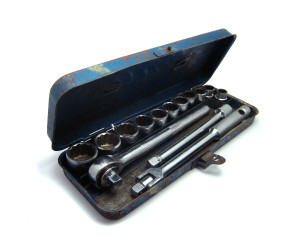Building Your Own Put Write Index and The Search for Yield
Overview:
 We’ve recently taken a look at two interesting indexes that sell puts: the CBOE Put Write Index and the NYSE Arca High Volatility Put Write Index. Both indexes sell cash secured puts. The CBOE index sells 30 day, at the money puts while $HVPW sells 60 day, 15% out of the money puts. One thing the indexes have in common is that they hold short term interest bearing investments to generate yield. Selling options effectively increases that yield (well, when things go right anyway). Today we’ll discuss creating your own put write index.
We’ve recently taken a look at two interesting indexes that sell puts: the CBOE Put Write Index and the NYSE Arca High Volatility Put Write Index. Both indexes sell cash secured puts. The CBOE index sells 30 day, at the money puts while $HVPW sells 60 day, 15% out of the money puts. One thing the indexes have in common is that they hold short term interest bearing investments to generate yield. Selling options effectively increases that yield (well, when things go right anyway). Today we’ll discuss creating your own put write index.
The Purpose:
The reason to create a put write index is to generate consistent monthly income or yield. Generally the tradeoff we see in yield bearing investments is that an increase in yield tends to be accompanied by an increase in price risk.
Creating your own put write index is intended to pair a relatively low risk, yield bearing investment with a conservative and systematic options writing strategy.
Put Writing:
The puts you write theoretically have an impact on the returns you generate. We would expect further out of the money puts to go in the money less often and, as a result, generate a more consistent monthly yield. However, the tradeoff for selling further out of the money is that you receive less premium and that translates into a lower yield. Let’s take a look at some puts.
In the table below, we’re comparing two puts in the Russell 2000 ($IWM) on Friday, February 14th, 2014. The table illustrates the significant differences between selling an at the money put and an out of the money put.
| $IWM Russell 2000 Naked Put Comparison. Prices based on 2/21/14 Close using April Puts with 56 days to expiration. | ||||||
|---|---|---|---|---|---|---|
| Strike Price | Premium & Expiration Break Even | Probability of Expiring ITM | Cash to Secure | Potential Yield on Cash | Margin | Potential Yield on Margin |
| 103 (10.8 Delta) | .58 / 102.42 | 12.73% | $10,242 | .566% | $1,108 | 5.23% |
| 115 (46 Delta, at the money) | 2.93 / 112.07 | 48.89% | $11,207 | 2.61% | $2,544 | 11.52% |
Now that we numerically see the differences between the two puts, it makes sense to think about the implications of selling the puts in terms of expectancy. If we know that the out of the money put has a 12% chance of expiring in the money, we also know that it has an 88% chance of expiring out of the money and that allows us to keep the premium. Here’s a table that walks through the expectancy of the two puts. Note that we’re only looking at the positive expectancy part of the trades and we’re not considering the potential loss.
| Russell 2000 Basic Expectancy for Two Naked Puts | |||
|---|---|---|---|
| Strike | Probability of Expiring OTM | Premium | Expected Premium |
| April 2014 103 Put | 87.27% | .58 | .51 |
| April 2014 115 Put | 51.11% | 2.93 | 1.50 |
Now that we know what we can expect to receive from the two puts (ignoring commissions) we have a basis for managing risk. Knowing that we expect to receive .51 for the 103 put and 1.50 for the 115 allows us to back into our break even loss. The challenge with backing into the break even loss is that we need to consider the expected loss, which means the probability of losing multiplied by the average loss.
If we take the probability of expiring in the money anywhere around the 103 level, the probability is extremely low and we end up going deep into the money in order to generate the corresponding loss. For example, at an underlying price of 94 the expected loss is (.40), but that is the product of a 4.74% chance of taking a $839 loss. Are you comfortable with sitting through that? The real take away is that we need to be aware of our own trading expectancy and use that as a basis for managing risk.
Capital Allocation:
Let’s suppose that we’re trading a small account, say $10,000, and that money is in a Reg-T margin account. Knowing that, we have approximately $20,000 of buying power, however, exceeding $10k in margin will require paying margin interest. In order to avoid margin interest, we’ll do our best to keep the margin requirements below $10k.
One option is to sell puts with part of our account and hold part in ETF’s that generate yield. Specifically, we could buy $5,000 worth of yield generating investments and sells puts using the remaining $5,000 of margin.
Looking back at the margin requirements in the table above, we could sell a maximum of four out of the money puts or one at the money put. Interestingly, the expected gain is roughly the the same and selling four out of the money puts creates a similar delta exposure to one at the money put. Alternatively, we could sell fewer out of the money puts and hold additional yield bearing investments.
Cash Investments:
The put write indexes we’ve taken a look at have held cash in 1-3 month T-Bills. While we can certainly build an index that holds an ETF like $BIL, the SPDR Lehman 1-3 month T-Bill ETF, there are some additional options as well. The cash portion of our index is the foundation for yield and, as a result, we don’t want to assume much price risk. In the word of yield bearing investments, more yield is usually accompanied by more price risk. In order to increase yield, one option is to hold several ETF’s with different strategies for generating yield. That could mean different types of bonds like High Yield Bonds or Foreign Government Bonds and it could even be extended to alternative strategies like holding the High Volatility Put Write Index ($HVPW). The table below includes a few alternatives.
| Ticker | Description | Current Yield (as of 3/7/14) |
|---|---|---|
| SHY | iShares Barclays 1-3 Year Treasury Bond | 0.26% |
| SJNK | SPDR Barclays Short Term High Yield Bond ETF | 5.28% |
| HYS | Pimco 0-5 Yr High Yield Corporate Bond Index ETF | 4.33% |
| QLTC | iShares B-Ca Rated Corporate Bond | 6.88% |
| ISHG | iShares S&P/Citi 1-3 Yrs Int'l Treasury Bnd | 0.20% |
| HVPW | Alps US Equity High Volatility Put Write | 9.03% |
| IEI | iShares Barclay 3-7 Year Treasury Bond | 0.80% |
| BSV | Vanguard Short Term Bond ETF | 1.16% |
Personally, I think holding a basket of yield generating investments is an interesting choice. Another extension would be to apply a simple Trend Following filter to the investments you hold. For example, only hold the ETF’s when they’re trading above the 200 day Simple Moving Average and exit if they close below.
Diversified Put Writing:
The existing put writing and buy write indexes seem to focus on equity puts. However, a whole world of possibilities for selling puts exists outside of stocks. At a minimum, selling puts on Gold ($GLD) and Bonds ($TLT) would provide some diversification beyond stocks. A better put writing index might hold $5,000 in cash and sell an out of the money put every month in $TLT, $GLD, and $SPY or $IWM. Note, GLDI – Gold Shares Covered Call ETN, is a relatively new ETN that simulates writing covered calls on Gold.
Beyond Puts:
Another extension of the put write index is a conservative options writing strategy that sells both puts and calls depending on market trend. I’m specifically thinking about the pTheta system, but you might have other ideas. If selling naked puts is a strategy that you aren’t comfortable with, selling vertical put spreads is another option.
Thanks for reading and if you enjoyed this article please share it using your favorite social media platform on the toolbar above.
Want to know when I post articles about new systems and trading ideas?
Sign up for my email list and stay up to date with the latest information on options trading and trend following.
Click here to sign up for the list, get a copy of the Theta Trend Options Trading System, the Trade Tacker I use, and information about new systems.
Even better . . . it’s all totally free.
